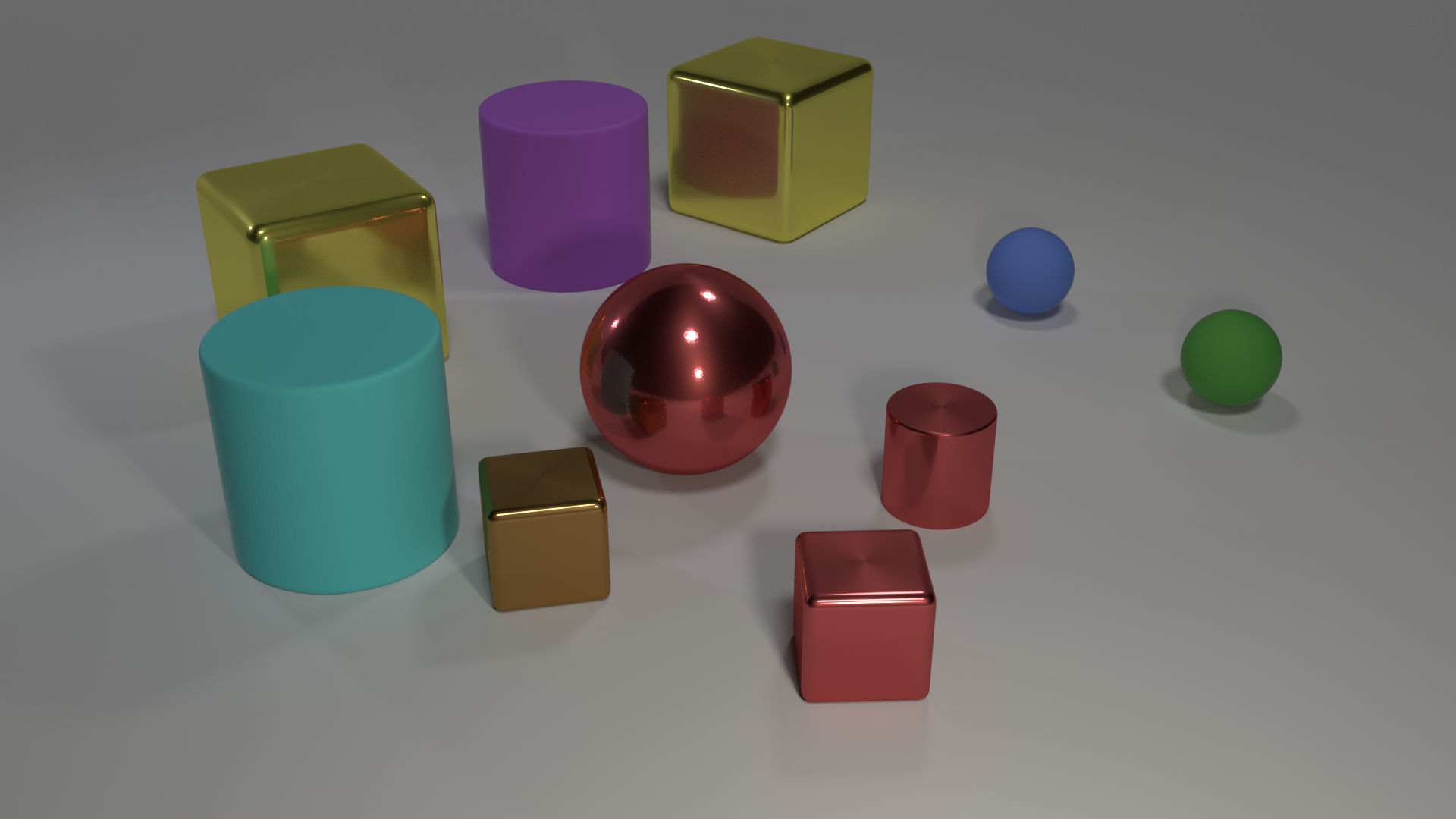This is the code developed based on the original CLEVR dataset generation code. The original non-action-based dataset generation mechanism is as described in the paper.
You can download the augmented CLEVR dataset here. It contains 54k training samples, 7k validation samples and 10k test samples. Each sample contains two images and a question. All questions are grouped into CLEVR_XYZ_questions.json files.
You can use this code to render synthetic images and compositional questions for those images, like this:
Q: How many small spheres are there?
A: 2
Q: What number of cubes are small things or red metal objects?
A: 2
Q: Does the metal sphere have the same color as the metal cylinder?
A: Yes
Q: Are there more small cylinders than metal things?
A: No
Q: There is a cylinder that is on the right side of the large yellow object behind the blue ball; is there a shiny cube in front of it?
A: Yes
Q: What color does the big red rubber cube in image1 change to in image2?
A: Blue
Q: How does the big red rubber cube move from image1 to image2?
A: Front Right
See more examples in the template folder of question_generation/.
If you find this code useful in your research, please cite the original paper and cite my work use this bibtex:
@misc{celinew1221_action_clevr_2018,
title={CLEVR Dataset Generation Augmented with Action Identification},
author={Celine Wei},
year={2018},
publisher={Github},
journal={GitHub repository},
howpublished={\url{https://github.com/celinew1221/clevr-dataset-gen/}},
}
All code was developed and tested on Ubuntu 16.04.
First we render synthetic images using Blender, outputting both rendered images as well as a JSON file containing ground-truth scene information for each image.
Blender ships with its own installation of Python which is used to execute scripts that interact with Blender; you'll need to add the image_generation directory to Python path of Blender's bundled Python. The easiest way to do this is by adding a .pth file to the site-packages directory of Blender's Python, like this:
echo $PWD/image_generation >> $BLENDER/$VERSION/python/lib/python3.5/site-packages/clevr.pthwhere $BLENDER is the directory where Blender is installed and $VERSION is your Blender version; for example on OSX you might run:
echo $PWD/image_generation >> /Applications/blender/blender.app/Contents/Resources/2.78/python/lib/python3.5/site-packages/clevr.pthYou can then render some regular CLEVR images like this:
cd image_generation
blender --background --python render_images.py -- --num_images 10On OSX the blender binary is located inside the blender.app directory; for convenience you may want to
add the following alias to your ~/.bash_profile file:
alias blender='/Applications/blender/blender.app/Contents/MacOS/blender'If you have an NVIDIA GPU with CUDA installed then you can use the GPU to accelerate rendering like this:
blender --background --python render_images.py -- --num_images 10 --use_gpu 1After this command terminates you should have ten freshly rendered images stored in output/images like these:
The file output/CLEVR_scenes.json will contain ground-truth scene information for all newly rendered images.
Similar to regular images, you can render action-based CLEVR images like this:
cd image_generation
blender --background --python render_images.py -- --num_images 10 --actionAfter this command terminates you should have ten freshly rendered images stored in output/images like these:
The image filename has a split parameter, by default "new" is the original image and "cor" is "new"'s corresponding image.
The file output/CLEVR_cb_scenes.json will contain ground-truth scene information for all newly rendered images and its changes.
You can find more details about image rendering here.
Next we generate questions, functional programs, and answers for the rendered images generated in the previous step. This step takes as input the single JSON file containing all ground-truth scene information, and outputs a JSON file containing questions, answers, and functional programs for the questions in a single JSON file.
You can generate questions like this for regular images:
cd question_generation
python generate_questions.pyThe file output/CLEVR_questions.json will then contain questions for the generated images.
You can generate questions for action-based images:
cd question_generation
python generate_questions.py --action 1 The file output/CLEVR_action_questions.json will then contain questions for the generated images.












